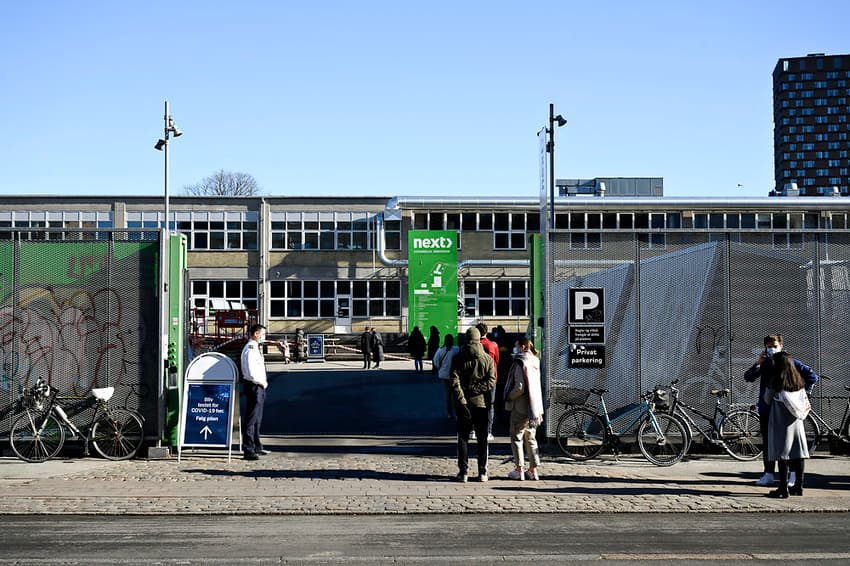Covid-19 infections stable in Denmark two weeks after partial reopening

The number of coronavirus infections in Denmark is not escalating, more than two weeks after the country lifted some restrictions on March 1st.
The reproduction rate or R-number nationally is currently 1.0. An R-number of 1.0 means that 10 infected individuals will pass the virus on to around 10 others. As such, the epidemic is neither waning nor increasing in Denmark.
A stable situation with the virus is considered positive news given that shops and schools were allowed to partially reopen on March 1st and the more infectious B117 variant is now the dominant form of Covid-19 in Denmark.
“This is a good effort by everyone. The measurements show there is still an impressive common focus on guidelines on testing, hygiene, face masks and more,” health minister Magnus Heunicke wrote on Twitter.
Vi har endnu en uge, hvor det danske kontakttal er beregnet til 1. Det er en flot indsats af alle, målinger viser fortsat imponerende fælles fokus på retningslinjer om test, hygiejne, mundbind mm. Jeg ved det er hårdt, men det er vores nøgle til at åbne op hurtigere.#COVID19dk pic.twitter.com/4O5qhkZ2Hf
— Magnus Heunicke (@Heunicke) March 16, 2021
The R-number is calculated based on infection rates during the previous week and does therefore not give an entirely current snapshot of the infection situation. It is, however, used by authorities as a marker for how the epidemic is spreading.
Two weeks ago, the R-number was estimated at 0.9, showing a slight fall-off in numbers on infections.
Since the beginning of this year, Denmark has maintained tight restrictions in order to slow the spread of the more infectious B117 variant, which was first identified in the United Kingdom late last year.
An additional easing of restrictions on schools came into effect this week.
READ ALSO: One in 10 people in Denmark has now had Covid-19 jab
Comments
See Also
The reproduction rate or R-number nationally is currently 1.0. An R-number of 1.0 means that 10 infected individuals will pass the virus on to around 10 others. As such, the epidemic is neither waning nor increasing in Denmark.
A stable situation with the virus is considered positive news given that shops and schools were allowed to partially reopen on March 1st and the more infectious B117 variant is now the dominant form of Covid-19 in Denmark.
“This is a good effort by everyone. The measurements show there is still an impressive common focus on guidelines on testing, hygiene, face masks and more,” health minister Magnus Heunicke wrote on Twitter.
Vi har endnu en uge, hvor det danske kontakttal er beregnet til 1. Det er en flot indsats af alle, målinger viser fortsat imponerende fælles fokus på retningslinjer om test, hygiejne, mundbind mm. Jeg ved det er hårdt, men det er vores nøgle til at åbne op hurtigere.#COVID19dk pic.twitter.com/4O5qhkZ2Hf
— Magnus Heunicke (@Heunicke) March 16, 2021
The R-number is calculated based on infection rates during the previous week and does therefore not give an entirely current snapshot of the infection situation. It is, however, used by authorities as a marker for how the epidemic is spreading.
Two weeks ago, the R-number was estimated at 0.9, showing a slight fall-off in numbers on infections.
Since the beginning of this year, Denmark has maintained tight restrictions in order to slow the spread of the more infectious B117 variant, which was first identified in the United Kingdom late last year.
An additional easing of restrictions on schools came into effect this week.
READ ALSO: One in 10 people in Denmark has now had Covid-19 jab
Join the conversation in our comments section below. Share your own views and experience and if you have a question or suggestion for our journalists then email us at [email protected].
Please keep comments civil, constructive and on topic – and make sure to read our terms of use before getting involved.
Please log in here to leave a comment.